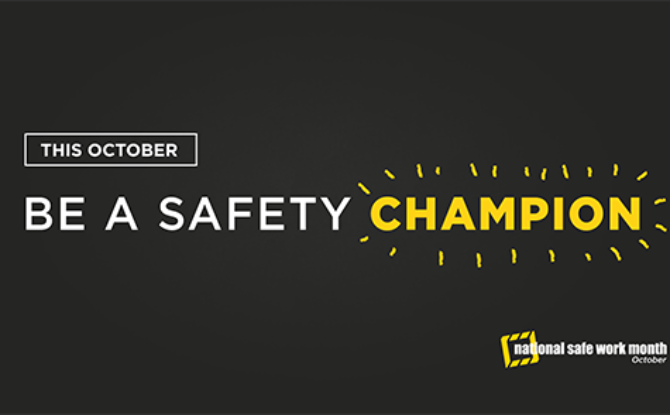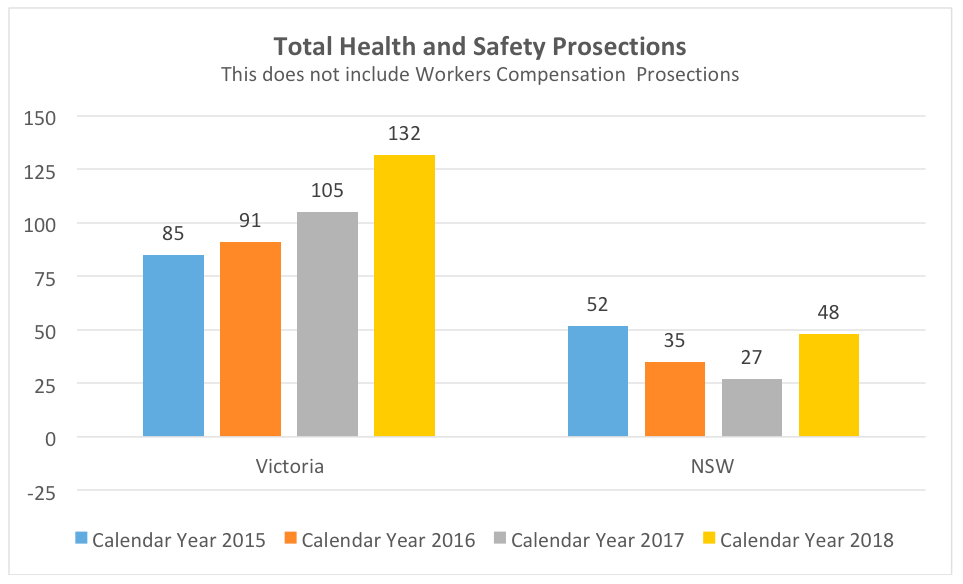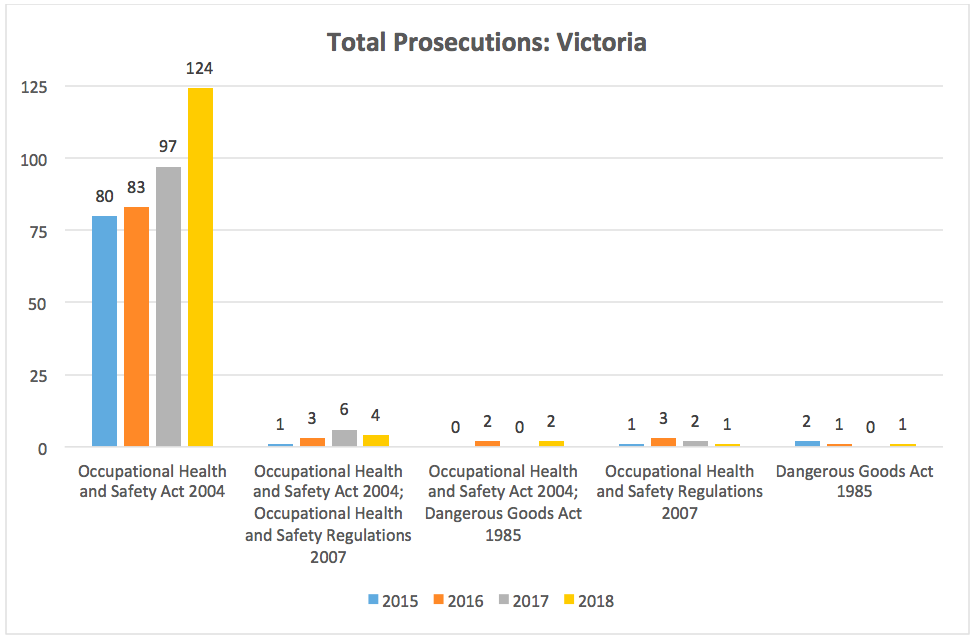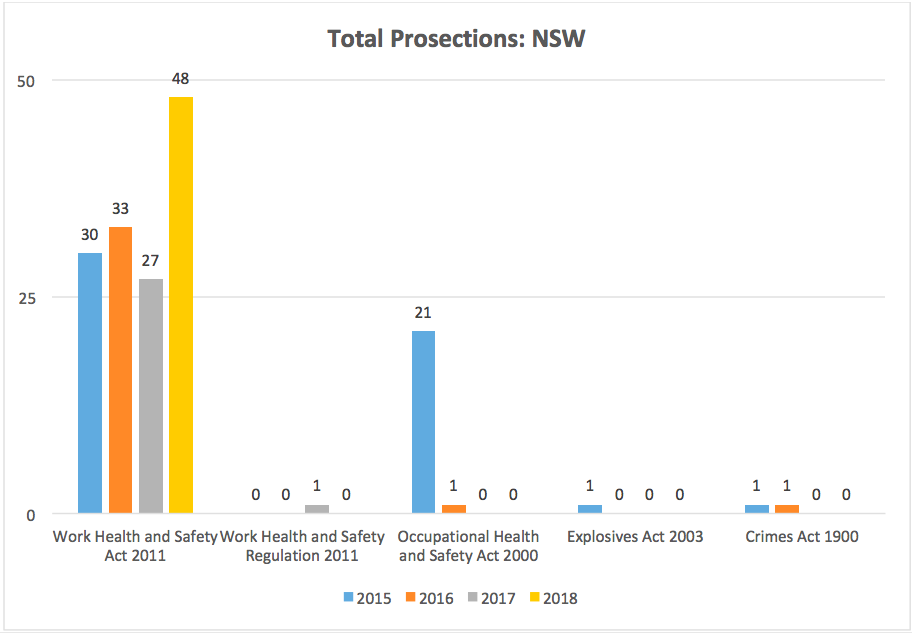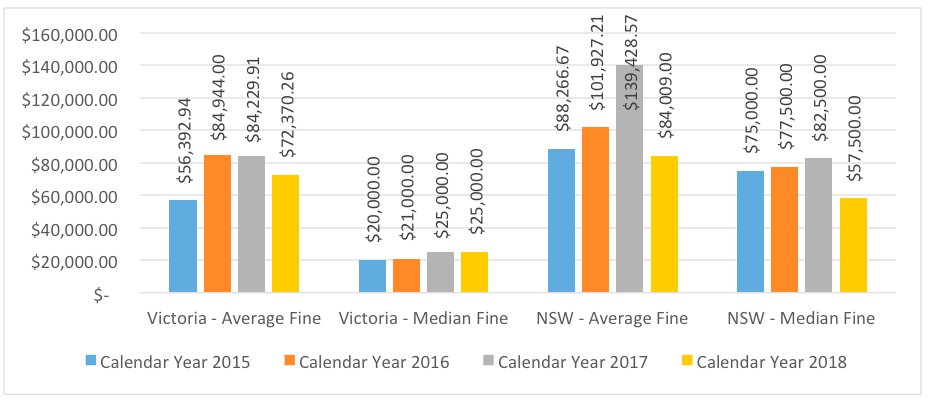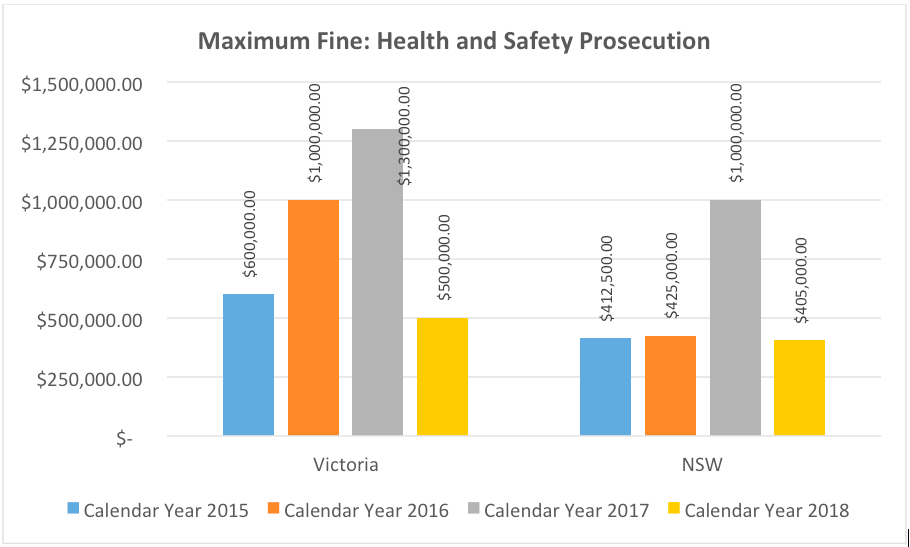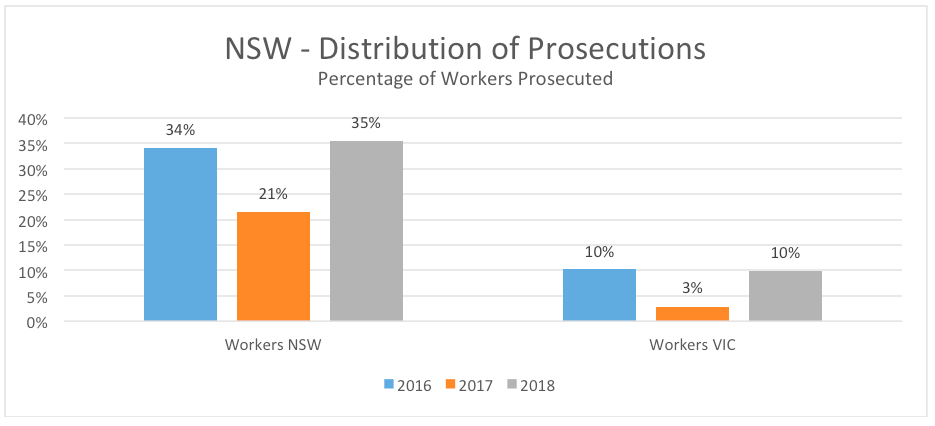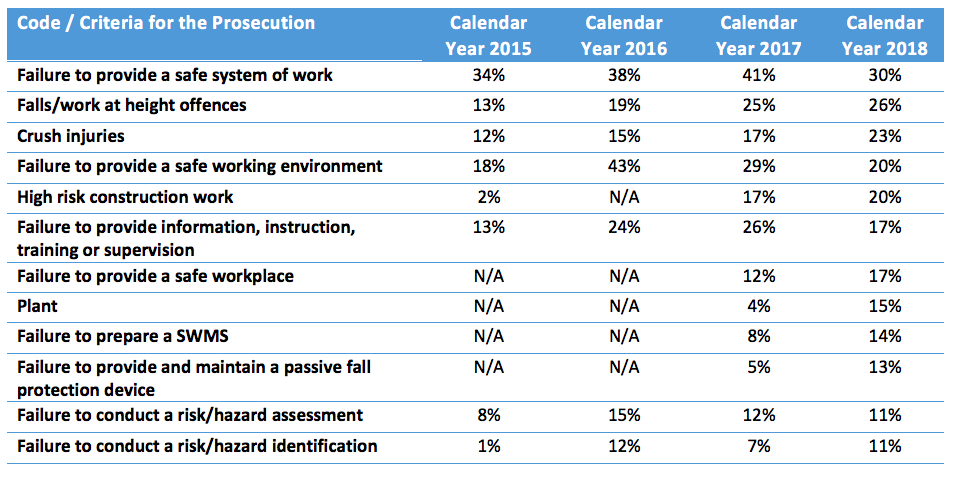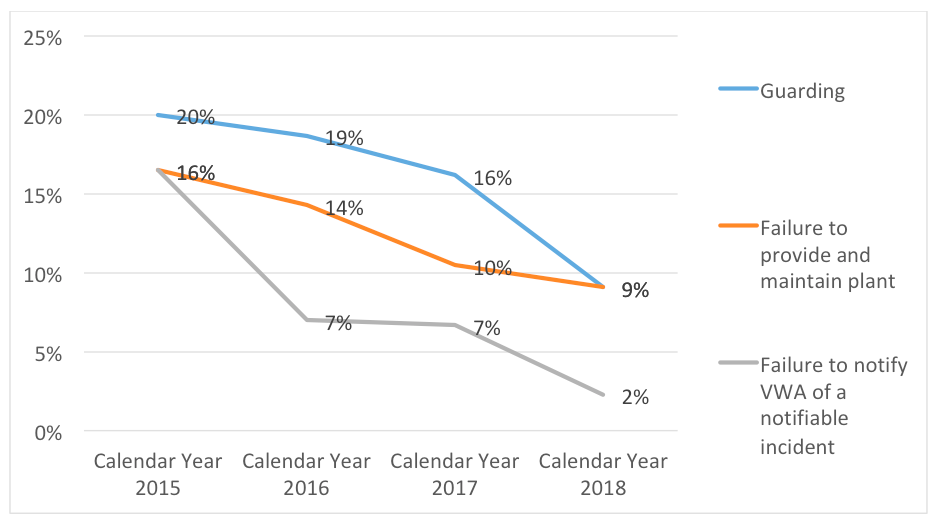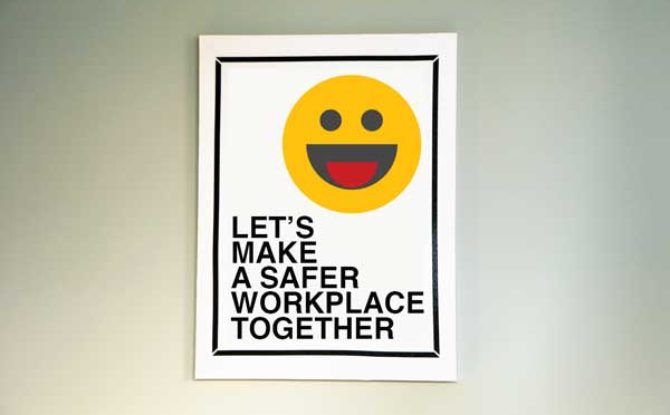Please find below a compilation of the latest legislation and codes, as of October 2019. Below this, you will see a list of all updates we have been tracking over time. Feel free to reference these as and when you need.
Safe Work Australia
Codes
First aid in the workplace | Model Code of Practice | August 2019
https://www.safeworkaustralia.gov.au/system/files/documents/1908/code_of_practice_-_first_aid_in_the_workplace_0_0.pdf
Queensland
Codes
Managing respirable crystalline silica dust exposure in the stone benchtop industry | Code of Practice | October 2019
https://www.worksafe.qld.gov.au/__data/assets/pdf_file/0005/181940/Managing-respirable-crystalline-silica-dust-exposure-in-the-stone-benchtop-industry-Code-of-Practice-2019.pdf
Victoria
Legislation Amendments
Victoria has introduced new requirements for working with engineered stone.
The Occupational Health and Safety Amendment (Crystalline Silica) Regulations 2019, applies to Part 4.1 (Hazardous substances) of the OHS Regulations.
In addition to current requirements all power tools used with engineered stone must:
- have an integrated water delivery system that supplies a continuous feed of water (on-tool water suppression), or
- be fitted with on-tool extraction attached to a HEPA filtered dust class H vacuum cleaner (or similar system that captures the dust generated).
If these controls are not reasonably practicable, the use of power tools must be controlled through local exhaust ventilation (LEV).
In addition, it is mandatory to provide Respiratory Protective Equipment (RPE) and associated training to anyone who is cutting, grinding or abrasively polishing engineered stone with a power tool.
Other requirement around air monitoring and health monitoring still apply.
The amendments come into effect on 20 August 2019.
See link for more details
https://www.worksafe.vic.gov.au/changes-protect-victorians-working-engineered-stone
Western Australia
Proposed Legislation Changes
Public Consultation on Work Health and Safety Regulations for Western Australia is currently open, opportunity for comment ends 26 November 2019.
https://www.commerce.wa.gov.au/publications/review-process-summary-develop-work-health-and-safety-regulations-western-australia
Northern Territory
Legislation Amendments
NT WorkSafe has introduced amendments to blood lead removal levels in the WHS (National Uniform Legislation) Regulations 2011 in line with the 2017 national agreement. The new levels will become mandatory from July 2021.
Please see the link for more details.
https://worksafe.nt.gov.au/forms-and-resources/bulletins/amendments-to-blood-lead-removal-levels
New South Wales
Legislation Amendments
SafeWork NSW has made amendments to the Work Health and Safety Act 2011 (WHS Act) and Work Health and Safety Regulation 2017 (WHS Regulation), these changes came into effect on 1 July 2019.
The WHS Act was amended to included Rural Workers Accommodation Provisions (The RWA Act 1969 was repealed).
The WHS Regulations had amendments in the following areas:
- Adjustment of fees
- Definitions changes
- Hazardous chemicals to align with the updated GHS requirements
- Lead definitions, thresholds and monitoring to align with National Review findings
- Diving for work
Further details:
https://www.safework.nsw.gov.au/legal-obligations/legislation/accordians/legislative-amendments-1-july-2019
Codes
Draft Formwork | Code of Practice
https://www.safework.nsw.gov.au/about-us/have-your-say?SQ_VARIATION_409447=0
SafeWork NSW has adopted the model codes of practice updated by Safe Work Australia throughout 2018. Mostly the updates are to improve readability and use, although there was a specific change made to the transport of asbestos waste in the Code of Practice: How to safely remove asbestos.
Abrasive blasting | Code of Practice | August 2019
https://www.safework.nsw.gov.au/__data/assets/pdf_file/0017/52145/Abrasive-blasting-COP.pdf
Confined spaces | Code of Practice | August 2019
https://www.safework.nsw.gov.au/__data/assets/pdf_file/0015/50073/Confined-spaces-COP.pdf
Construction work | Code of Practice | August 2019
https://www.safework.nsw.gov.au/__data/assets/pdf_file/0014/52151/Construction-work-COP.pdf
Demolition work | Code of Practice | August 2019
https://www.safework.nsw.gov.au/__data/assets/pdf_file/0015/52161/Demolition-work-COP.pdf
Excavation work | Code of Practice | August 2019
https://www.safework.nsw.gov.au/__data/assets/pdf_file/0019/52147/Excavation-work-COP.pdf
First Aid in the workplace| Code of Practice | August 2019
https://www.safework.nsw.gov.au/__data/assets/pdf_file/0015/52152/First-aid-in-the-workplace-COP.pdf
Hazardous manual tasks| Code of Practice | August 2019
https://www.safework.nsw.gov.au/__data/assets/pdf_file/0020/50078/Hazardous-manual-tasks-COP.pdf
How to manage and control asbestos in the workplace | Code of Practice | August 2019
https://www.safework.nsw.gov.au/__data/assets/pdf_file/0014/50081/How-to-manage-and-control-asbestos-in-the-workplace-COP.pdf
How to manage work health and safety risks | Code of Practice | August 2019
https://www.safework.nsw.gov.au/__data/assets/pdf_file/0012/50070/How-to-manage-work-health-and-safety-risks-COP.pdf
How to safely remove asbestos | Code of Practice | August 2019
https://www.safework.nsw.gov.au/__data/assets/pdf_file/0015/50082/How-to-safely-remove-asbestos-COP.pdf
Labelling of workplace hazardous chemicals | Code of Practice | August 2019
https://www.safework.nsw.gov.au/__data/assets/pdf_file/0016/50083/Labelling-of-workplace-hazardous-chemicals-COP.pdf
Managing electrical risks | Code of Practice | August 2019
https://www.safework.nsw.gov.au/__data/assets/pdf_file/0010/50230/Managing-electrical-risks-in-the-workplace-COP.pdf
Managing noise and preventing hearing loss at work | Code of Practice | August 2019
https://www.safework.nsw.gov.au/__data/assets/pdf_file/0017/50075/Managing-noise-and-preventing-hearing-loss-at-work-COP.pdf
Managing the risk of falls at workplaces | Code of Practice | August 2019
https://www.safework.nsw.gov.au/__data/assets/pdf_file/0018/50076/Managing-the-risk-of-falls-at-workplaces-COP.pdf
Managing risks of hazardous chemicals in the workplace | Code of Practice | August 2019
https://www.safework.nsw.gov.au/__data/assets/pdf_file/0018/52155/Managing-risks-of-hazardous-chemicals-in-the-workplace-COP.pdf
Managing the risks of plant in the workplace | Code of Practice | August 2019
https://www.safework.nsw.gov.au/__data/assets/pdf_file/0019/52156/Managing-the-risks-of-plant-in-the-workplace-COP.pdf
Managing the work environment and facilities | Code of Practice | August 2019
https://www.safework.nsw.gov.au/__data/assets/pdf_file/0016/50074/Managing-the-work-environment-and-facilities-COP.pdf
Preparation of safety data sheets for hazardous chemicals | Code of Practice | August 2019
https://www.safework.nsw.gov.au/__data/assets/pdf_file/0017/50084/Preparation-of-safety-data-sheets-for-hazardous-chemicals-COP.pdf
Managing the risk of falls in housing construction | Code of Practice | August 2019
https://www.safework.nsw.gov.au/__data/assets/pdf_file/0020/52157/Managing-the-risk-of-falls-in-housing-construction-COP.pdf
Safe design of structures | Code of Practice | August 2019
https://www.safework.nsw.gov.au/__data/assets/pdf_file/0003/52158/Safe-design-of-structures-COP.pdf
Spray painting and powder coating | Code of Practice | August 2019
https://www.safework.nsw.gov.au/__data/assets/pdf_file/0004/52159/Spray-painting-and-powder-coating-COP.pdf
Welding processes | Code of Practice | August 2019
https://www.safework.nsw.gov.au/__data/assets/pdf_file/0014/52160/Welding-processes-COP.pdf
Work health and safety consultation, cooperation and coordination | Code of Practice | August 2019
https://www.safework.nsw.gov.au/__data/assets/pdf_file/0013/50071/Work-health-and-safety-consultation,-cooperation-and-coordination-COP.pdf
South Australia
Legislation Amendments
Lead
SafeWork SA have introduced the Work Health and Safety (Blood Lead Removal Levels) Variation Regulations 2019 that came into operation on 1 July 2019. This change reduces the notification levels of the allowable blood lead levels in workplaces (by 2021), as agreed nationally.
Further information: https://www.safework.sa.gov.au/licensing/notifications/lead-risk-work
Dangerous Substances
Amendments to the Dangerous Substances (Dangerous Goods Transport) Regulations 2008 (SA) (DGT Regulations) came into effect on 1 July 2019.
These amendments ensure consistency across associated legislation including Edition 7.6 of the Australian Code for the Transport of Dangerous Goods by Road and Rail (the Code).
Further information: https://www.safework.sa.gov.au/business-industry/transport/hazards-risks/transport-dangerous-goods
Newly Released Codes of Practice – June 2019
Here you will find the latest Codes of Practice documents as of June 2019. Below this, you will see a catalogue of updates for your reference on an ongoing basis.
Safe Work Australia
Review of the model WHS laws: Final report
The review of the model WHS laws was conducted in 2018 and was released publicly in February 2019.
Ms Boland made 34 recommendations for the improvement of the implementation of the model WHS laws. Here is the final report to see the full findings and discussions:
Review of the Model WHS Laws – Final Report
Northern Territory
Best Practice Review of WHS in NT
The Northern Territory has also been reviewing their management of WHS. Please find here the review and recommendations from by Mr Tim Lyons.
Best Practice Report Final Report 10 January 2019
Queensland
Codes
Construction and operation of solar farms | Code of Practice | May 2019
Regulations
Electrical Safety Regulation | Minor Changes
- Modified educational requirements of a “qualified business person” (QBP) and raised the experience requirements of a “qualified technical person” (QTP) from one year to two years under the ES Regulation. Effective 1 January 2019.
WHS Regulation | Minor Changes
- Time period for Health and Safety Representative (HSR) training to occur reduced from six months to three months after election, with provision for a longer period if the training course is not reasonably available within three months. Effective 1 February 2019.
- Making explicit that the Regulator can cancel the registration of a design or item of plant for non-compliance with a condition of registration. Effective 1 January 2019.
- Enabling the sharing of information with other agencies that is necessary for those agencies to administer or enforce their legislation, namely the Biosecurity Act 2014, Exhibited Animals Act 2015, Labour Hire Licensing Act 2017, Planning Act 2016 andProfessional Engineers Act 2002
Further details:
WHS and Other Legislation Amendment Regulation 2018
Tasmania
Regulations
WHS Regulations | Minor Changes
Division 2 – General diving work – Fitness and competence of worker | Changes Effective 1 January 2019:
- Regulations 168, 169 and 170 regarding medical fitness to undertake general diving work;
- Regulations 178 and 179 requiring a dive plan to be prepared and to be complied with, when general diving work is carried out; and
- Regulations 180 and 181 requiring a dive safety log to be kept and retained for at least one year after the last entry.
Further details:
https://www.worksafe.tas.gov.au/laws/the_legislation/whs_law_changes
South Australia
Codes
Abrasive Blasting | Code of Practice | March 2019 – Click here for updates
First aid in the workplace | Code of Practice | March 2019 – Click here for updates
How to manage work health and safety risks | Code of Practice | March 2019 – Click here for updates
Managing risks of hazardous chemicals in the workplace | Code of Practice | March 2019 – Click here for updates
Managing the risks of plant in the workplace | Code of Practice | 2019 – Click here for updates
Managing the work environment and facilities | Code of Practice | 2019 – Click here for updates
Preparation of safety data sheets for hazardous chemicals | Code of Practice | March 2019 – Click here for updates
Welding processes | Code of Practice | March 2019 – Click here for updates
Work health and safety consultation, co-operation and co-ordination | Code of Practice | 2019 – Click here for updates
Western Australia
Codes
Concrete and masonry cutting and drilling | Code of Practice | March 2019
Newly Released Codes of Practice – January 2019
Here you will find the latest Codes of Practice documents as of January 2019. Below this, you will see a catalogue of updates for your reference on an ongoing basis.
Tasmania Codes
Work Health and Safety Consultation, Cooperation and Coordination Code of Practice, Effective 5 Dec 2018
Welding Processes Code of Practice, Effective, 5 Dec 2018
Spray Painting and Powder Coating Code of Practice, Effective 5 Dec 2018
Safe Design of Structures Code of Practice, Effective 5 Dec 2018
Preventing Falls in Housing Construction Code of Practice, Effective 5 Dec 2018
Managing the Work Environment and Facilities Code of Practice, Effective 5 Dec 2018
Managing the Risks of Plant in the Workplace, Effective 5 Dec 2018
Managing the Risk of Falls at Workplaces Code of Practice, Effective 5 Dec 2018
Managing Risks of Hazardous Chemicals in the Workplace Code of Practice, Effective 5 Dec 2018
Managing Noise and Preventing Hearing Loss at Work Code of Practice, Effective 5 Dec 2018
Managing Electrical Risks in the Workplace Code of Practice, Effective 5 Dec 2018
Labelling of Workplace Hazardous Chemicals Code of Practice, Effective 5 Dec 2018
How to Safely Remove Asbestos Code of Practice, Effective 5 Dec 2018
How to Manage Work Health and Safety Risks Code of Practice, Effective 5 Dec 2018
How to Manage and Control Asbestos in the Workplace Code of Practice, Effective 5 Dec 2018
Hazardous Manual Tasks Code of Practice, Effective 5 Dec 2018
First Aid in the Workplace Code of Practice, Effective 5 Dec 2018
Excavation Work Code of Practice, Effective 5 Dec 2018
Demolition Work, Effective 5 Dec 2018
Confined Spaces Code of Practice, Effective 5 Dec 2018
Abrasive Blasting Code of Practice, Effective 5 Dec 2018
SA Codes
No new or updated codes
NSW Codes
No new or updated codes
NT Codes
No new or updated codes
QLD Codes
No new or updated codes
Victoria Codes
No new or updated codes
Safe Work Australia
Stayed tuned for the public release of the 2018 Review of the model WHS laws: https://www.safeworkaustralia.gov.au/law-and-regulation/model-whs-laws/review-model-whs-laws
Newly Released Codes of Practice – October 2018
The past year has seen a substantial increase in the number of safety codes released for public review and now many have been adopted by the regulators. Safe Work Australia worked hard to released ten Model Codes of Practice that we are beginning to see local regulators adopt. Below is a list of clickable newly released codes of practice state-by-state, as of 21 November 2018.
Model Codes of Practice
Safe design of structures Code of Practice, October 2018
Preventing falls in housing construction, October 2018
Spray painting and powder coating, October 2018
Hazardous manual tasks, October 2018
Confined spaces, October 2018
Managing noise and preventing hearing loss at work, October 2018
Managing the risk of falls at workplaces, October 2018
Labelling of workplace hazardous chemicals, October 2018
How to safely remove asbestos, October 2018
How to safely remove asbestos, October 2018
Abrasive blasting, May 2018
Construction work, May 2018
First aid in the workplace, May 2018
How to manage work health and safety risks, May 2018
Managing the risks of plant in the workplace, May 2018
Managing the work environment and facilities, May 2018
Managing risks of hazardous chemicals in the workplace, May 2018
Preparation of safety data sheets for hazardous chemicals, May 2018
Work health and safety consultation, cooperation and coordination, May 2018
Welding processes, May 2018
WA Codes
Western Australia has released a CODE OF PRACTICE Emergency management for Western Australian mines
Draft Code: Mentally healthy workplaces for fly-in fly-out (FIFO) workers in the resources and construction sectors
NSW Codes
Managing risks in stevedoring, December 2017
QLD Codes
Managing risks in stevedoring, March 2018
Managing the risk of falls at workplaces Code of Practice, July 2018
Recreational Diving, Recreational Technical Diving and Snorkelling Code of Practice, Feb 2018
TAS Codes
Abrasive blasting, August 2018
Construction work, August 2018
First aid in the workplace, August 2018
How to Manage Work Health and Safety Risks, August 2018
Managing risks of hazardous chemicals in the workplace, August 2018
Managing the work environment and facilities, August 2018
Managing the risks of plant in the workplace, August 2018
Preparation of Safety Data Sheets for Hazardous Chemicals, August 2018
Welding Processes, August 2018
Work Health and Safety Consultation, Cooperation and Coordination, August 2018
ComCare Codes
Managing risks in stevedoring, November 2017
NT Codes
No new compliance codes
VIC Codes
WorkSafe Victoria has been working hard over the past year to review the Victorian Codes of Practice and Compliance Codes to bring them in line with current legislation and industry practice. While the Compliance Codes will be very similar to Model Codes of Practice they have been specifically designed to support Victorian Workplaces to meet their legislated duties.
Confined spaces, March 2018
Demolition, May 2018
Excavation, May 2018
Facilities in construction, March 2018
Hazardous manual handling, March 2018
Hazardous substances, July 2018
Noise, March 2018
Plant, March 2018
Managing asbestos in workplaces, October 2018
Removing asbestos in workplaces, October 2018
Prevention of falls in general construction, October 2018
Prevention of falls in housing construction, October 2018
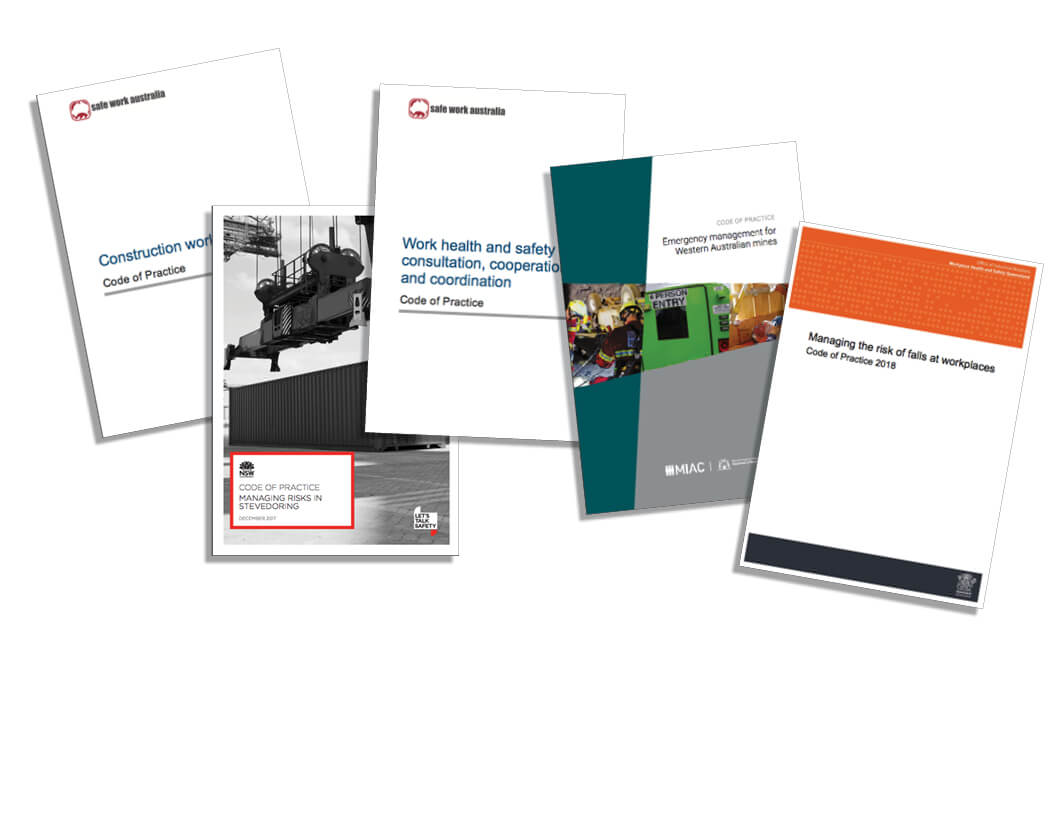
We will endeavour to keep this list of newly released codes of practice updated on a regular basis.





